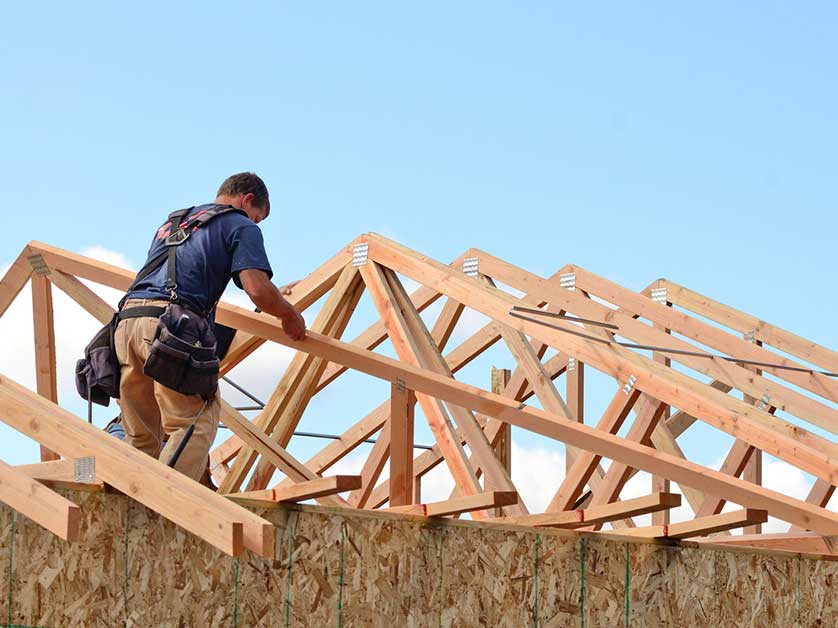When designing a new roof, your roofing contractor may ask you to choose between rafters and trusses for the roof framing. In today’s post, Up and Above Contractors, LLC explains the differences between these two key roofing components.

Rafters vs. Trusses
Rafters and trusses are structural elements that provide support and stability to the roof system. They form the framework that carries the weight of the decking and outer roofing, as well as additional loads like snow or wind.
Traditional roofing systems are built with rafters as part of a complete framing system. They are individual sloped beams that are joined at the bottom with joists and a central ridge beam at the top. Fascia boards — the vertical boards where the gutters are attached to — are installed to cover rafter tails, though some architectural styles feature exposed rafter tails as a design element.
Trusses, on the other hand, are complete, prefabricated structures made of multiple interconnected members. Where a roof with rafters are built on-site, trusses are manufactured and assembled prior to installation.
Facts About Rafters and Trusses
As a homeowner, knowing the differences between rafters and trusses can be helpful when making informed decisions with your roofing and siding contractor.
- Rafters are more suitable for steep slopes. A roof built with rafters requires a minimum slope to ensure efficiency as a structural component, making it more suitable for steeply-sloped roofs. Since trusses are pre-assembled, a steep slope would make it difficult to transport.
- Trusses can be made with materials other than wood. Trusses are designed with software and built with materials other than timber, allowing for more complex roof designs with minimal difference in labor cost. A traditionally-built roof, if properly designed and built by a skilled roofer, would be just as durable. However, you have to make sure that you’re keeping up with its maintenance requirements, as roofing frames made from timber are more vulnerable to moisture damage.
- Rafters allow expansion. If your long-term plans include converting the attic to a living space, you need a traditionally-built roof. As described above, the traditional roof framing can be built with steep slopes, which allow more headroom in both senses of the word.
The roofers at Up and Above Contractors, LLC can help you decide on choosing the type of roofing, as well as quality replacement windows and doors, for your home. Give us a call at (973) 300-0636, or fill out our contact form to schedule an appointment. We serve Sussex, Morris and Warren counties and other communities in Northern NJ, including Sparta and Andover.
